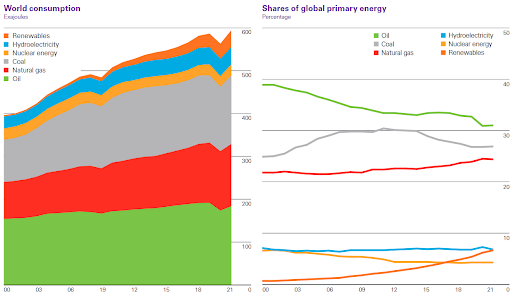What is Energy Literacy?
Energy Literacy is vital and in short supply. It is an understanding of the nature and role of energy in the world and daily lives accompanied by the ability to apply this understanding to answer questions and solve problems.
Energy-literate persons:
- Can trace energy flows and think in terms of energy systems.
- Know how much energy they use, for what purpose, and where the energy comes from.
- Can assess the credibility of information about energy.
- Can communicate about energy and energy use in meaningful ways.
- Are able to make informed energy use decisions based on an understanding of impacts and consequences.
- Continue to learn about energy throughout their lives.
Why does it matter?
We should all know enough to discern fact from fiction in energy matters because:
- Personal energy consumption and enterprise-level cost management and optimization demand it;
- Meeting the country’s Climate targets (“NDC’s”) is a collective responsibility;
- In industry, Carbon emission responsibility is on its way to forming part of the social license to operate;
- The media are not generally energy-literate, so it is valuable to get mastery of facts;
- Everyone is, directly or indirectly, an influencer and shaper of policy – Public, Private and Personal.
What are the benefits of Energy Literacy?
A better understanding of energy can:
- lead to more informed decisions
- improve the security of a nation
- promote economic development
- lead to sustainable energy use
- reduce environmental risks and negative impacts
- help individuals and organizations save money.
According to the US Department of Energy, “Without a basic understanding of energy, energy sources, generation, use, and conservation strategies, individuals and communities cannot make informed decisions on topics ranging from smart energy use at home and consumer choices to national and international energy policy. Current national and global issues such as the fossil fuel supply and climate change highlight the need for energy education.”
Where does energy come from?
- Almost all energy is solar. The sun:
-
- Provides all heat and light;
- Enables the Food Chain, in which each organism’s retained energy feeds the organism that eats it;
- By enabling the Food Chain in turn enables humans and animals to apply their energy to tasks;
- Grows trees, whose wood is stored energy used for fire, another source and expression of energy;
- Powers the wind by heating and cooling air, in turn powering sails and windmills;
- Generates evaporation and rainfall, which creates running water for boats and waterwheels;
- Stores itself in organic matter not consumed in real time, creating:
- A solid battery: coal
- A liquid battery: oil
- A vaporous battery: gas
- Tidal energy derives from the interaction of the sun, moon and earth.
- Nuclear energy may derive from minerals deposited by meteors; scientific debate is ongoing.
- Geothermal energy is the result of radioactive decay underground, and the heat of the earth’s core.
How is the world’s energy consumed by type?
- Fossil fuels account for 80% of primary energy use today, gradually dropping from 85% seven years ago.
- Oil continues to hold the largest share of the energy mix, exceeding 30%.
- Coal, at number 2, grew by 8% in 2022
- Natural gas, a close third, grew by 5.3%
- The share of renewables rose by 15% but still is barely 8% of the global energy mix
- Nuclear makes up only 4% of the energy mix.
- Hydro’s share of energy increased by 0.4 percentage points last year to 6.9%, the first increase since 2014.
(Source: BP annual statistical review of world energy and https://www.eesi.org/topics/fossil-fuels/description)
The main reason for the ongoing predominance of hydrocarbon fuel use is that the energy content of oil exceeds all others, per unit, except nuclear, with coal and natural gas just behind.
For an excellent elaboration of the above, see: https://www.energy.gov/sites/default/files/2017/07/f35/Energy_Literacy.pdf

How has energy use evolved over time?
- Human muscle, powered by food: humanity’s main energy system for most of pre-history and history
- Fire added heat, light and more food variety (~400,000 years ago)
- Running water (streams to rivers)
- Animal muscle augmented human muscle
- Wind powered boats starting ~5000 years ago
- Wood fire eventually enabled furnaces for pottery and ore refining
- Coal was first burned ~2400 years ago
- Windmills: 300 years ago
- The steam engine: 300 years ago
- The steam turbine: 200 years ago
- First Liquefied Natural gas: 1852
- Electricity: 200 years ago
- Battery storage: 160 years ago
- The internal combustion engine: 150 years ago
- Hydroelectric: 130 years ago
- The internal combustion turbine: 90 years ago
- Solar PV: 70 years ago (but 1839 was first identification)
- Nuclear power: 65 years ago
- Carbon Capture and Storage: 45 years ago
What is the relationship of energy to the climate?
A global concern is Climate Change and how to control it. About 67% of it is linked to the world’s energy system.
The Carbon produced by burning coal, oil and gas is identified as a “Greenhouse Gas” and is being curbed.
A global goal to limit the warming of the earth’s temperature to 1.5° C by 2050 seems unachievable:

Pounds of CO2 emitted per million British thermal units (Btu) of energy for various fuels:
- Coal (anthracite): 228.60
- Diesel fuel and heating oil: 163.45
- Gasoline (without ethanol): 155.77
- Propane: 138.63
- Natural gas: 116.65
These are important distinctions when trade-offs must be made.
Fossil fuel combustion contributed 534 Mt in 1900, and 9.14 Gt in 2018. The rise in atmospheric concentration of CO2 went from 285 parts per million (ppm) in 1850 to 408.5 ppm in 2018 (+30%).
What is the Energy Transition all about?
Energy is always in transition, as shown above. Innovation has always driven transitions, but now Governments add haste.
Concerns about anthropogenic global warming began to receive wide public attention during the 1980s:
- The Intergovernmental Panel on Climate Change was founded in 1988
- The first United Nations Framework Convention on Climate Change was signed in 1992 in Rio de Janeiro.
- The Kyoto Protocol was signed in 1997
- COP 25 produced the Paris Agreement of 2015, with its “Nationally Determined Contributions”
- The United Nations Climate Change Convention of 2019
- COP 27 was held in Cairo, Egypt in 2022
Historically, the main sources of primary energy have never been displaced rapidly and completely in short periods of time.
High global dependence on fossil energy and the enormous scale of the fuel-dominated global energy system mean that the present energy transition towards decarbonization will inevitably follow its predecessors and extend well beyond 2050.
Consider the historic patterns: Energy transitions are a key defining process in human evolution.
- The first millennia-long transition was from the reliance on traditional biofuels such as wood, charcoal, crop residues and animate sources of energy derived from human and animal muscles, to increasingly common reliance on inanimate energy converters: water wheels, windmills and better harnessed draft animals for fieldwork and transportation.
- Transition to hydrocarbon fuels to produce heat, thermal electricity and kinetic energy began in England during the 16th century.
- It took hold in Europe and North America only after 1800,
- and in most of Asia only after 1950.
The transition to fossil energy has been accompanied by increasing reliance on primary electricity, dominated by hydroelectricity since the 1880s, with nuclear generation contributing since the late 1950s.
The transition from traditional biofuels to fossil fuels has resulted in gradual relative decarbonization, but also in enormous growth in absolute emissions of CO2.
As the global energy transition progressed, coal consumption overtook the burning of traditional biofuels.
- Coal was surpassed by the combined mass of hydrocarbons (crude oils and natural gases).
- The rising share of primary electricity, much of it generated by hydro power, has further reduced the average carbon intensity of the world’s primary energy supply.
- However, this relative decline has been accompanied by an almost uninterrupted growth of absolute CO2 emissions.
The United Nations process for accelerating the current transition relies on backing out fossil fuel consumption far faster than any historic rate, to be replaced by renewable sources which consume “free fuel” – sun, wind, water.
Issues are:
- The materials used in renewables are not free and cause environmental impact;
- The energy produced is intermittent, thus unreliable, and must be augmented with other power sources;
- Battery storage is undeveloped enough to solve such intermittency;
- Developing countries have a right to monetize their own resources for economic advancement;
- Simply replacing wood burning in Africa with gas would save the equivalent of 10 Million barrels of oil a day.
Contributing source: https://ppforum.ca/policy-speaking/is-vaclav-smil-the-voice-of-reason-we-all-need-to-hear/
Why does Systems Thinking help?
It takes energy to capture and redirect energy, making efficiency necessary so that outputs exceed inputs as much as possible. All energy management creates environmental impact. Examples:
- Oil and gas drilling rigs need steel and manufacturing, consuming energy, and operating a rig consumes much fuel.
- Wind turbines are steel towers made in coal-fired blast furnaces, topped by plastic blades from petroleum, installed by diesel-powered construction equipment.
- Solar PV panels require mining Rare Earth minerals, transport in HFO-burning ships, energy-intensive manufacturing, re-transport in ships and by roads, and installation using petroleum-derived fuels and cements.
- Recycling of blades and panels still has quite some ways to go.
- Nuclear is well known to create its largest potential impact in disposing of spent fuel with a remaining half-life. Accidents always set the industry back a long way.
Being Energy Literate demands an understanding of all the inputs of materials, manufacturing and fuel, full-cycle, from extraction though operation to abandonment for a given energy resource.
For good overviews of the environmental impact of all sources of energy, see: https://www.eia.gov/energyexplained/energy-and-the-environment/
What are the essential principles and concepts in Energy Literacy?
- Energy is a physical quantity that follows precise natural laws.
- Physical processes on Earth are the result of energy flow through the Earth system.
- Biological processes depend on energy flow through the Earth system.
- Various sources of energy can be used to power human activities, and often this energy must be transferred from source to destination.
- Energy decisions are influenced by economic, political, environmental, and social factors.
- The amount of energy used by human society depends on many factors.
- The quality of life of individuals and societies is affected by energy choices.
For an excellent elaboration of the above, see: https://www.energy.gov/sites/default/files/2017/07/f35/Energy_Literacy.pdf
